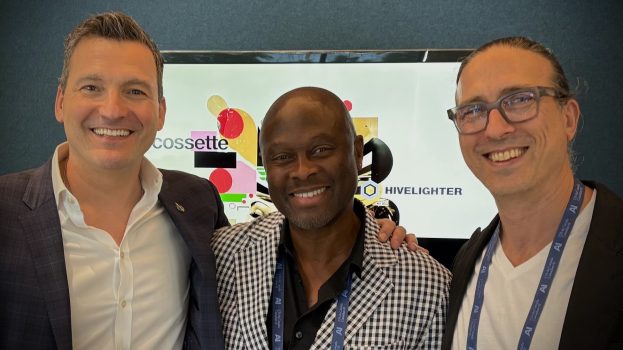
The theoretical and academic side of artificial intelligence has been forging a closer relationship with business and industry in recent years, and a discussion out of this week’s CDMC conference in Toronto attempted to educate advertisers and marketers increasingly interested in the field on what they need to know to help bridge those two worlds.
The guest of honour was Geoffrey Hinton, a leading researcher in the field of AI and chief scientific advisor for The Vector Institute, an AI research project announced last month and backed by funding from the government and dozens of Canadian companies. On the panel with him was Tomi Poutanen, co-founder and co-CEO of Layer 6 (which provides a deep learning AI platform to enterprise clients) and one of the co-founders behind The Vector Institute.
A lack of understanding about AI from the business ecosystem led to Canada’s best thinkers seeking opportunities in other markets – exactly the rationale behind why it’s imperative the business world understands it now. Poutanen pointed out that one of the goals of The Vector Institute was to be the top academic school for deep learning and AI to build Canada’s academic strength in the field now that businesses are starting to see the opportunity in using the technology.
It’s also important for marketers to have an understanding of the technology, as the transition to digital marketing means many of the assets they are creating are being optimized by these systems.
“Digital platforms already use sophisticated algorithms to target ads,” he said. “You need to understand how those algorithms work and almost need to approach it as a data science problem. You have to understand that you may need to test and refine your assets, which algorithms can help with as well.”
Hinton is regarded by many to be one of the leading academics in AI and related fields since its infancy. Where the earliest forms of AI were created by manually entering data into computers that then mimicked human logic by interpreting that data within a set of rules, modern AI systems instead mimic the human brain by drawing connections between features of information or images it is shown, recognizing where there are similarities in spite of certain aspects being different. That, he said, is where the creative capabilities of AI lay.
“For new AIs, creativity is not going to be a problem for them because it’s at the essence of how they work,” Hinton says. “Old-fashioned AI was dead symbols, putting in rules and facts that were uninterpreted because they were either identical or not to another symbol. In the new AI, you have big patterns of activity in a neural network, which can have thousands of features, and two concepts can have parallel features. You get creativity when you see the similarities between two concepts, despite the differences.”
The major application Poutanen pointed to for AI was being able to recognize patterns and relationships in the data a company already has on a customer to personalize experiences, which is more important as consumers move to less-penetrable digital environments. It can also, somewhat ironically, offer more authentic interactions with brands, as it allows voice and conversation-based systems like chatbots or Amazon Alexa to have actual conversations with consumers. But as for where its going, Hinton pointed at two major things.
In the world of healthcare, AI systems are already being used to look at an image at a patch of skin and tell whether any irregularities there may be malignant, as it can be shown and learn from millions more examples than a dermatologist would in their career. It could also be used to process a person’s medical records and genetic history to predict irregularities and future health conditions because it can see and recognize patterns physician wouldn’t.
But when it came specifically to marketing, Hinton pointed out that because it can be shown and learn from many more examples of those things being at work, an AI system will be able to pick up on the subtle things that people react to but are consciously aware of in things like images, videos and language. As an example, he points to the fact that many words related to the nose and mouth begin with the letter “S,” or how an AI-powered translator could work better if it was shown pictures of Chinese words instead of typed characters because it can see the flourishes and other aspects that give the words extra meaning.
“Up until now, people didn’t really understand what experience is,” Hinton said. “There’s all these unconscious things you are sensitive to but don’t know consciously. That’s the kind of thing that these AIs are going to be able to pick up on. New technologies picking up on that will be vital to understanding the experiences we have.”























